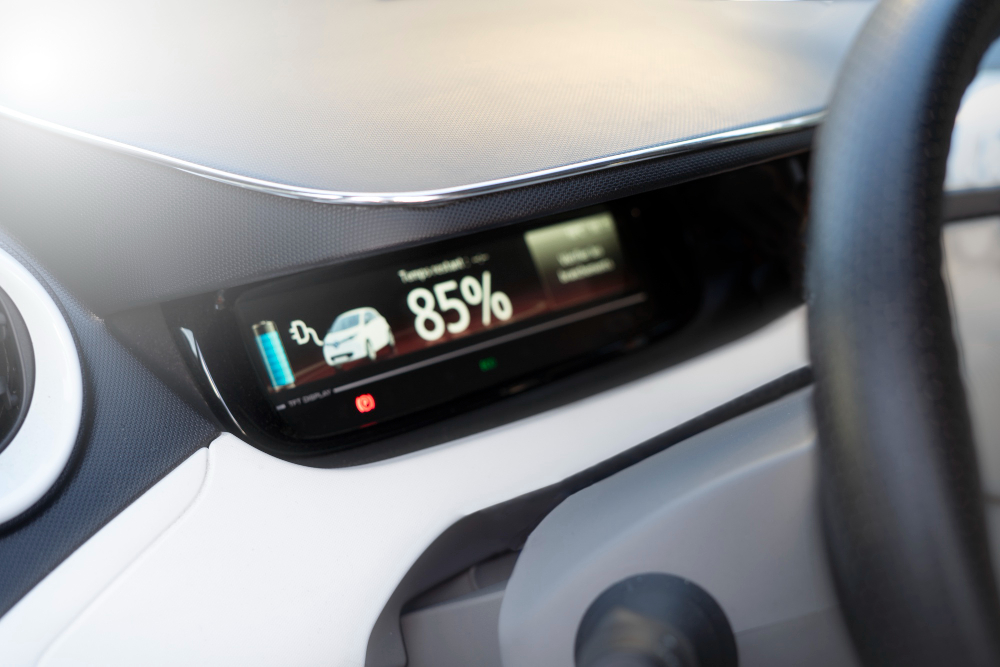Gone are the days when electric cars were seen as mere novelties or prototypes. Today, major automobile manufacturers are investing heavily in developing high-performance EVs that can rival their gasoline counterparts.
With technological advancements, have you ever wondered what makes these futuristic machines tick? What technology is used in electric vehicles?
In this post, we will delve into the fascinating world of electric vehicles and explore the cutting-edge technology that powers them. Read on!
Technology Innovations in Electric Vehicles
From digital infotainment systems to regenerative braking systems, we will unravel the current technological innovations of EVs. Keep reading to learn more!
Digital Infotainment Systems

At its core, a digital infotainment system integrates various components such as audio/video interfaces, touchscreen displays, voice commands, and control panels to deliver a range of functionalities.
These systems offer features like multimedia playback, navigation, communication, connectivity with smartphones, vehicle diagnostics, and access to various apps and services.
One of the primary purposes of a digital infotainment system is to keep the driver and passengers entertained during the journey. Users can enjoy music, podcasts, audiobooks, and video content through integrated media players.
Additionally, they can connect their smartphones via Bluetooth or other wireless technologies to stream their favorite music and make hands-free calls.
Automatic Battery Heating

As batteries in EVs are sensitive to extreme temperatures, cold weather can have a significant impact on their efficiency and range. Thus, automatic battery heating systems are designed to maintain the optimal temperature of the electric car battery pack by actively warming it when necessary.
These systems use various methods to heat the battery, such as electric resistance heaters or heat pumps.
The goal is to maintain optimal temperature, enhance charging efficiency, improve battery performance, optimize driving range, manage energy, and ensure reliable operation even in cold climates.
Vehicle-to-Grid

Another innovation for EVs is Vehicle-to-Grid (V2G). It is an innovative EV technology enabling bi-directional energy flow between EVs and the power grid. This technology allows EVs to draw energy from the grid and return excess electricity, stabilizing the grid during peak demand or emergencies.
This innovation benefits the grid’s stability, facilitates renewable energy use, and offers EV owners a revenue source by selling stored electricity.
V2G holds the potential to transform EVs into integral components of a sustainable energy ecosystem.
AI Algorithms for EV Charging Management

The next technological innovation for EVs is AI algorithms for EV charging management. They are a vital technology innovation in battery electric vehicles as they use artificial intelligence to optimize charging speeds, considering factors like grid capacity, electricity prices, and user preferences.
Some benefits of this technology include improved efficiency, reduced costs, and personalized charging schedules. AI algorithms also support demand response, balancing grid loads and promoting sustainable EV adoption.
Regenerative Braking

Regenerative is probably one of the most famous EV technology innovations. Unlike conventional vehicles, which dissipate braking energy as heat, regenerative braking allows EVs to recapture and convert this energy back into usable electricity.
It converts braking energy into electricity, increasing efficiency and extending the driving range. This technology also helps preserve the battery’s lifespan and provides a smoother driving experience.
It’s noteworthy that regenerative braking is most effective during stop-and-go city driving or downhill descents when braking events are more frequent. In highway driving or continuous high-speed scenarios, the benefits of regenerative braking in an electric vehicle may be less pronounced.
Frequently Asked Questions
What technologies are in Tesla?
Tesla vehicles feature advanced electric powertrains, Autopilot driver-assistance, OTA updates, a Supercharger network, cutting-edge battery tech, large touchscreen infotainment, regenerative braking, and advanced safety features.
Who is leading in electric car technology?
Currently, Tesla is a leading company in electric car technology. However, the industry is continuously evolving, and other companies may make advancements in the future.
What is the biggest challenge with an electric vehicle?
The biggest challenge with an electric vehicle is the limited driving range due to the current technology of electric vehicle batteries. Efforts are ongoing to improve this aspect and enhance overall EV adoption.
Conclusion
In conclusion, the technology used in electric vehicles has come a long way, and it plays a vital role in shaping the future of transportation. With technological advancements, EVs are becoming more accessible, efficient, and sustainable.
By embracing these innovations and working together towards a common goal, we can power a future that is not only clean and efficient but also economically and environmentally sustainable.
If you’re interested in contributing to a greener future, plan your electric road trip now and visit Kilowatt Cars to find the best second-hand electric cars for sale in Albury and second-hand electric vehicles for sale in Wangaratta!






